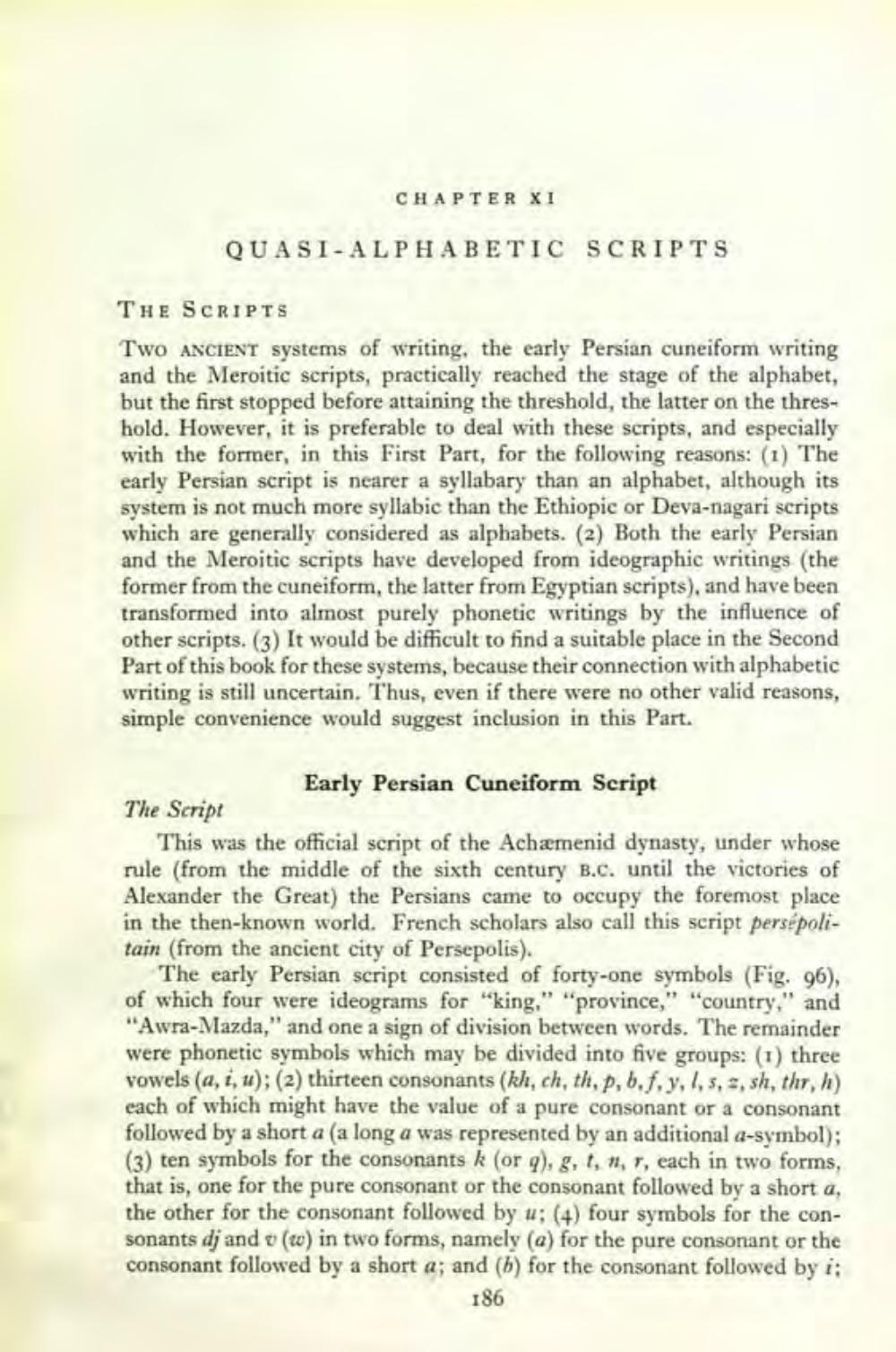________________
CHAPTER XI
QUASI-ALPHABETIC SCRIPTS
THE SCRIPTS Two ANCIENT systems of writing, the early Persian cuneiform writing and the Meroitic scripts, practically reached the stage of the alphabet, but the first stopped before attaining the threshold, the latter on the threshold. However, it is preferable to deal with these scripts, and especially with the former, in this First Part, for the following reasons: (1) The early Persian script is nearer a syllabary than an alphabet, although its system is not much more syllabic than the Ethiopic or Deva-nagari scripts which are generally considered as alphabets. (2) Both the early Persian and the Meroitic scripts have developed from ideographic writings (the former from the cuneiform, the latter from Egyptian scripts), and have been transformed into almost purely phonetic writings by the influence of other scripts. (3) It would be difficult to find a suitable place in the Second Part of this book for these systems, because their connection with alphabetic writing is still uncertain. Thus, even if there were no other valid reasons, simple convenience would suggest inclusion in this Part.
Early Persian Cuneiform Script The Script
This was the official script of the Achæmenid dynasty, under whose rule (from the middle of the sixth century B.C. until the victories of Alexander the Great) the Persians came to occupy the foremost place in the then-known world. French scholars also call this script persépolitain (from the ancient city of Persepolis).
The early Persian script consisted of forty-one symbols (Fig. 96), of which four were ideograms for "king," "province," "country," and "Awra-Mazda," and one a sign of division between words. The remainder were phonetic symbols which may be divided into five groups: (1) three vowels (a, i, u); (2) thirteen consonants (kh, ch, th, p, 6.f, y, 1.5, 2, sh, thr, h) each of which might have the value of a pure consonant or a consonant followed by a short a (a long a was represented by an additional a-symbol); (3) ten symbols for the consonants k (or q), g, 1, 1, 7, each in two forms, that is, one for the pure consonant or the consonant followed by a short a, the other for the consonant followed by u; (4) four symbols for the consonants dj and (w) in two forms, namely (a) for the pure consonant or the consonant followed by a short a; and (b) for the consonant followed by i;
186




